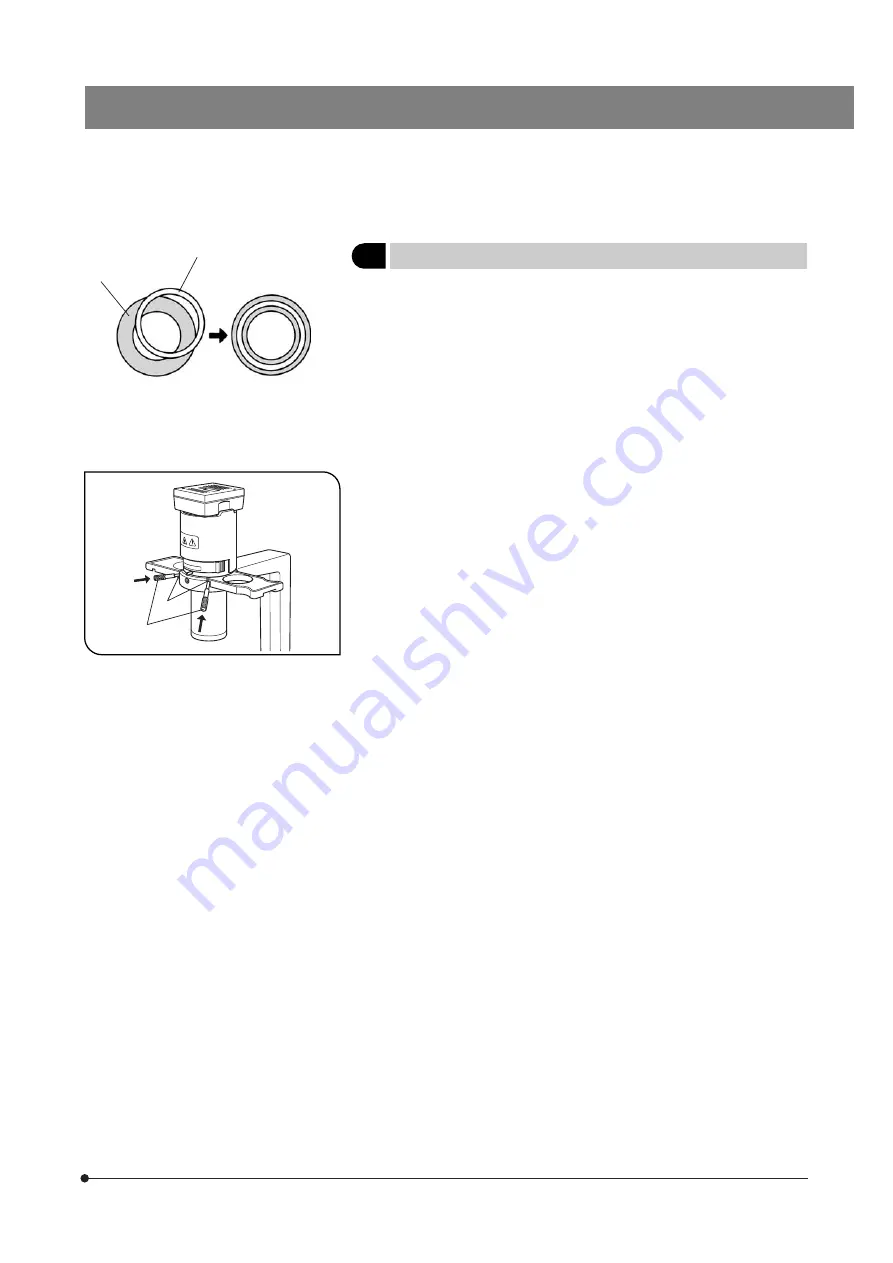
19
CKX41/CKX31
Fig. 23
Fig. 24
4
Centering the Light Annulus
(Figs. 23 & 24)
# The IX2-SLP does not need to be centered.
However, as the phase contrast effect near the vessel edge tends to
drop because the light annulus image may be deformed due to the
liquid surface curvature (surface tension). Use the center area of the
light annulus whenever possible.
1. Place a specimen on the stage and bring it into focus.
2. Replace the eyepiece in the sleeve which does not have a diopter ad-
justment ring with the CT-5 or U-CT30 centering telescope.
3. Make sure the magnification of the objective in the light path matches
that of the light annulus on the phase slider.
4. While looking into the centering telescope, turn the knurled dial to focus on
the phase annulus
2
of the objective corresponding to the light annulus
@.
(Fig. 24)
5. Insert the centering knobs
4
into the two centering screw holes
3
on
the phase slider. Tighten and loosen the centering knobs until the light
annulus is superimposed on the phase annulus
2
of the objective. (Figs.
24 & 25)
6. Repeat the above steps to adjust centering with other objectives. How-
ever, the IX2-SL uses the PHC and PH1 light annulus with both the 10X
and 20X objective. To ensure the use with both objectives, put the 10X or
20X objective that has not been used for centering into the light path and
make absolutely sure the light annulus @ is not deviating from the phase
annulus ². If there is any deviation, perform the centering procedure with
the other objectives again.
# Optimum performance cannot be achieved if the light annulus is
not properly centered.
# Ghost images of the light annulus may sometimes emerge. If this
happens, superimposed the brightest light annulus image with the
phase annulus.
# When a thick specimen is moved or replaced, the light annulus and
the phase annulus may deviate. This can reduce image contrast. If
this happens, repeat steps 1 to 5 for readjustment.
# The centering procedure may have to be repeated in order to get the
best possible contrast if a specimen slide or the bottom surface of a
culture vessel is not flat. Center the light annulus using objectives in
the order of lower to higher magnifications.
@
²
³
|
















































